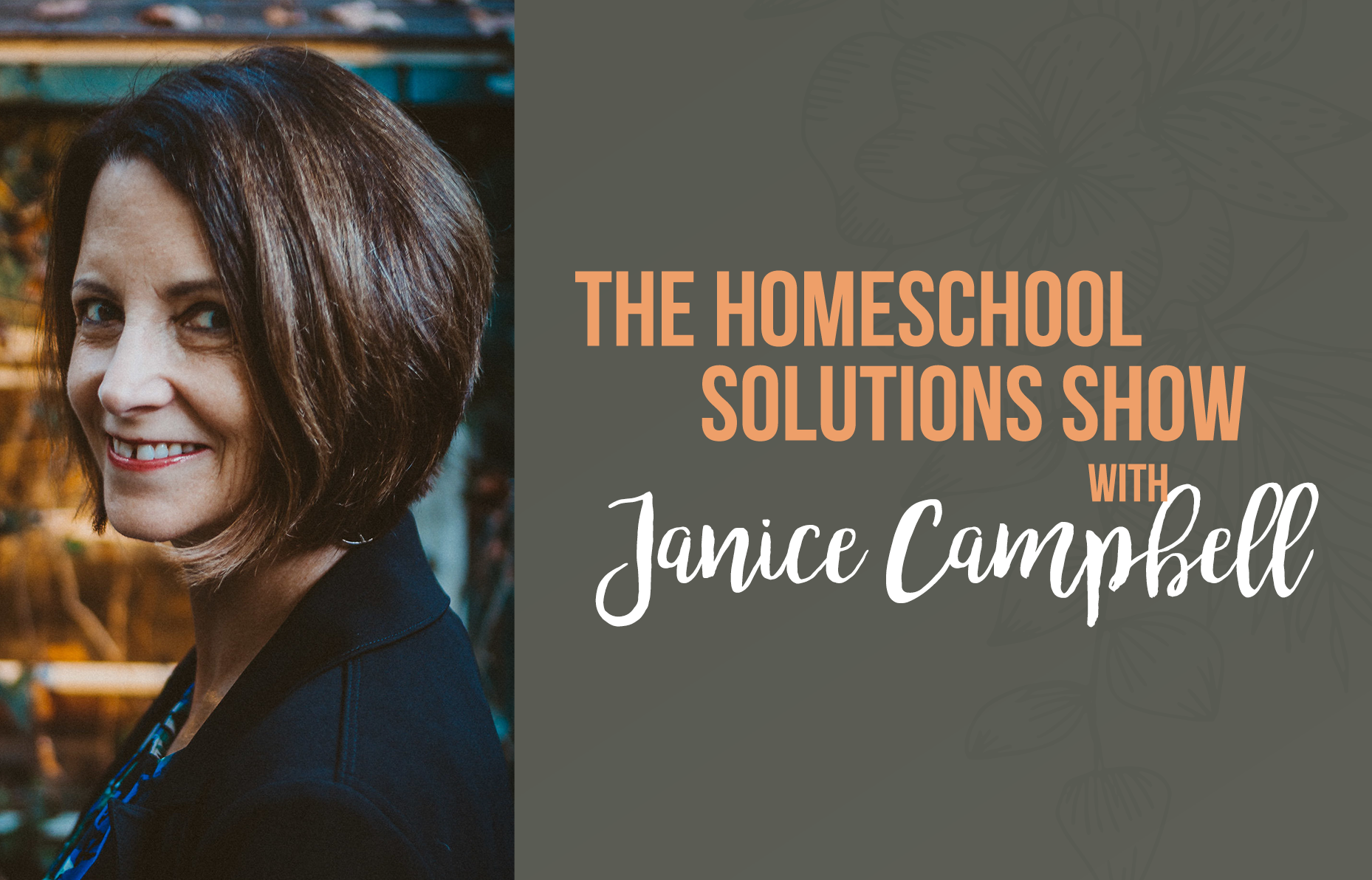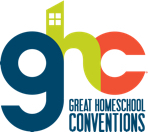386 | Middle Grade Reading – Old Books or New? (Janice Campbell)
Show Notes:
A while back, I came across an interesting comparison of two middle school reading lists — one from 1908 and one from a bit more than 100 years later. The original article compared the lists based on time period, thematic elements, and reading level, and I'll share that comparison along with a few ideas for interesting middle-grade reading.
About Janice
Janice Campbell, a lifelong reader and writer, loves to introduce students to great books and beautiful writing. She holds an English degree from Mary Baldwin College, and is the graduated homeschool mom of four sons. You’ll find more about reading, writing, planning, and education from a Charlotte Mason/Classical perspective at her websites, EverydayEducation.com, Excellence-in-Literature.com, and DoingWhatMatters.com.
Resources
Layne Longfellow reading excerpt from Longfellow's Evangeline
Free K-12 Charlotte Mason curriculum
Connect
Janice Campbell | Instagram | Facebook | Twitter | Pinterest | Website
Homeschooling.mom | Instagram | Website
Thank you to our sponsors!
Medi-Share: an affordable Christian alternative to traditional health insurance
Tuttle Twins: children’s books to help you teach your kids how the world really works
Have you joined us at one of the Great Homeschool Conventions? We hope to see you there!
For more encouragement on your homeschooling journey, visit the Homeschooling.mom site, and tune in to our sister podcast The Charlotte Mason Show.
Show Transcript:
Janice Campbell Hi, I'm Janice Campbell, and I'm happy to be back with you today. Some time ago, I came across an interesting comparison of two middle school reading lists. The author, Annie Holmquist, had compared a list from 1908 with a current list from the same state on the basis of time period, thematic elements, and reading level. The first list she chose is packed with excellent books I enjoyed as a kid--and no, I wasn't reading them in 1908--and books that I've discovered and enjoyed in the years since. I would consider all of the 1908 selections to be delightful, engaging reading that should be well within the reach of a middle school student, and virtually any of them would make an excellent family read-aloud. The more recent list contains two classics and a dramatic version of The Diary of Anne Frank, rather than the book, which isn't a bad thing, it's just interesting. I still find it interesting that the modern reading selections seem chosen not to introduce students to some of the most fascinating times and places in history, but to wrap them in the familiar. It scarcely seems like the point of an educational reading list. But perhaps my desire to learn about the roots of our culture--the Western civilization--affect my impressions, too. I remember, though, when I was in my first high school literature class and I was expecting Shakespeare and Austen and maybe Mark Twain and all that good sort of literature that I'd read about in the books that I had been reading on my own. But instead, I got S.E. Hinton's The Outsiders and Rumble Fish, and That Was Then, This Is Now. There's nothing wrong with those Hinton books, they were fun to read, and they did correspond rather nicely to the current events in nearby East Los Angeles and even in our own neighborhood. However, they were interesting and they were relatable, but they weren't challenging at all. They would have been great casual or summer reading, and even suitable for reading during a free reading period at school. But why spend time on them in literature class?
Janice Campbell My personal reading journey was a bit different than most of my peers, though. I spent most of my childhood and teens reading old books. Books in which characters--often kids my age--talked about or dramatized scenes from Shakespeare, mythology, and other great classics. Remember the first chapter of Little Women, where the girls were dramatizing one of the stories from the past? I came across a lot of that in the books that I read, and it just sounded like so much fun, and I always wanted to know more about those books...the books that others had read, that were interesting people in the world that I was inhabiting. So being tantalized by these glimpses of great literature when I was young, I'd been looking forward to exploring classics such as The Odyssey and King Lear and The Last of the Mohicans in high school, and wanted to share the reading experience of my favorite characters. And beyond that, I'd realized that there was something called a "great conversation" happening. That's an ongoing process where writers and thinkers in each age reference and build on and refine the work of those who have come before them. I wanted to listen in to that great conversation and learn from it. I actually never got to explore most of those classics in my high school classrooms or my middle school classrooms. But I ended up doing so much of it on my own, and then I went still further in college as an English major because I still wanted to know, and, beyond that, with writing my own Excellence in Literature curriculum for grades 8 through 12. I'd be willing to bet that some of my classmates in school would have enjoyed the classics, too. Just as today's kids might be surprised to find that they enjoy books written long before they were born. But anyway, here's my adapted version of the article by Annie Holmquist of Intellectual Takeout that sparked this train of thought. I'll add another thought or two at the end, and I'd love to know what you think about reading lists for school-aged students.
Janice Campbell So middle school reading lists 100 years ago versus today... Annie writes, "I recently dug up a 1908 curriculum manual in the Minnesota Historical Society. It provided instructions on everything from teacher deportment to recommended literature lists for various grades. As a book lover, I was especially interested in the latter. Along with a few textbook-type anthologies, the recommended reading material for Minnesota's 7th and 8th graders in 1908 suggest twenty works, including things such as Evangeline by Henry Wadsworth Longfellow, Harold, Last of the Saxon Kings by Edward Bulwer Lytton, Tanglewood Tales and other books by early author Nathaniel Hawthorne, the Courtship of Miles Standish by Longfellow again, and there's Knickerbocker's History of New York by Washington Irving, The Spy by James Fenimore Cooper and The Deerslayer as well, and stories from Charles Dickens, and the Gold Bug by Edgar Allan Poe, interesting things, Treasure Island and Captains Courageous from Rudyard Kipling and Robert Louis Stevenson. So it made me wonder what similar school districts' lists would look like today. Is it true that modern education standards are being dumbed down?" So to compare, Annie looked at the Edina Public School District, one of the Twin Cities' finest districts. In addition to a few anthologies, what she found was thirteen reading options for 7th and 8th-grade students that included things such as Nothing But the Truth by Avi, A Step From Heaven, An Na, The Adventures of Tom Sawyer by Mark Twain, Fahrenheit 451, Call Me Maria by Judith Ortiz Cofer, The House of the Scorpion by Nancy Farmer, The Last Book in the Universe by Rodman Philbrick, and so forth. There were interesting selections. The Diary of Anne Frank, as I mentioned, was in audio form or dramatized form.
Janice Campbell So the three differences between the reading content of these two eras that caught Annie's attention was time period. She writes, "One of the striking features of the Edina list is how recent the titles are. Most of the selections were published in the 21st century. In fact, only four are more than 20 years old. In comparison, over half the titles on the first list were at least 20 years old in 1908, with many of them averaging between 50 to 100 years old. Older is not necessarily better, but the books on the first list suggest that the schools in the past were more likely to give their students time-tested classic literature rather than books whose popularity may just be a passing fad.".
Janice Campbell Annie looks at thematic elements as well. She writes that "the second striking difference between the two book lists are the themes they explore. The first list is full of historical references and settings which stretch from ancient Greece (Tanglewood Tales) to the Middle Ages and the founding of America. Through highly recognized authors such as Longfellow, Stevenson, Kipling, and Dickens, these titles introduce children to a vast array of themes critical to understanding the foundations upon which America and Western civilization were built. The contemporary list, however, largely deals with modern history and seems to have a global focus, which is not a bad thing. It touches on many of the current political and cultural themes such as the Taliban, cloning, illegal immigrants, the drug war, and deeply troubled youth. In terms of longstanding classic authors, Mark Twain and Ray Bradbury are the only ones who stand out. It is good for children to understand the world in which they live, but as with any area of life, you can have too much of a good thing. A continual focus on modern literature narrows the lens through which children can view and interpret the world. Would it not be better to broaden their horizons and expose them to a balance of both old and new literature?".
Janice Campbell And the third thing Annie noticed is reading level. She writes, "If you take a look at the books on the modern Edina list, most use fairly simple language and a somewhat limited vocabulary. There are fewer books on the most recent list, thirteen versus twenty in the 1908 list. And both lists contain tales of adventure. And the older list also contains some short stories and poetry. There are books on both lists that I would enjoy reading. I'm just not sure that the modern list offers much, if anything, in the way of a reading challenge for middle graders. Consider a brief sample of text from The Last Book in the Universe by Rodman Philbrick, a post-apocalyptic dystopian novel. The first-person narrator sounds casual and engaging, the plot sounds intriguing, but overall, the book seems like an ideal recreational read for a kid that likes dystopian literature rather than something that they would be studying in a classroom. Here's the little excerpt: 'Nobody around here reads anymore. Why bother when you can just shoot all the images and excitement straight into your brain? I've heard of books, but they were long before I was born, in the Back Times, before the Big Shake.' And that's the end of that excerpt. But on the other hand, consider this excerpt from the first paragraph of Henry Wadsworth Longfellow's Evangeline. This is an epic story poem, and it's based on a tragic story that takes place during the forced removal by the British of the Acadian people from their homeland in the 18th century. Literature like this is not just about what happens (plot-based), but it also is designed to immerse the reader in another world, a world where the pace slows down and even the surroundings evoke a sense of mystery and depth and meaning. This is literature that has influenced the writing of many other authors too. So here's Henry Wadsworth Longfellow's Evangeline, first few lines: 'This is the forest primeval. The murmuring pines and the hemlocks, Bearded with moss and in garments green, indistinct in the twilight, Stand like Druids of eld, with voices sad and prophetic, Stand like harpers hoar, with beards that rest on their bosoms. Loud from its rocky caravans, the deep-voiced neighboring ocean Speaks, and in accents disconsolate answers the wail of the forest.' (End of quote.).
Janice Campbell "So the first example uses very simple words and a casual sentence structure, while the second uses a rich, evocative vocabulary in a more complex writing format. You might look at that second selection and say, 'Good grief, how do you expect a young person to understand that?' But you look at it. That's the whole point of education. Unless we give our students some rich and challenging materials to read, contemplate, and study, how will they ever be advanced beyond a basic reading level?". And if you go back to that little selection, it's simply a description that evokes what that stand of forest looks like, sounds like, and the mood of it. And it's not really hard to understand. If you look at it, it's similar to the language that J.R.R. Tolkien uses in some of the songs and poetry in his writings. Try reading it aloud or listen to a brief excerpt being read by Lane Longfellow. You can find an excerpt in the link at the show notes. He reads it a little more dramatically than I did. Evangeline is different from a lot of modern literature, but that's not a bad thing. Annie says, "My takeaway from this comparison: It's fine that schools today have students read contemporary literature, but we still need to make sure that they also read good literature from the past and are sufficiently challenged." So that's the end of the section of Annie and my adaptations...Annie's original article and my adaptations. And both the new and adapted versions of that part were licensed under Creative Commons license, so that's that shareable too.
Janice Campbell So what would my middle-grade reading list include? You'll find one clue in the reading list for Introduction to Literature, the first level of my Excellence in Literature curriculum. This level is designed to be used in grades 8 or 9, which is similar to the grades we've been talking about in those other two lists. Students who are using it will read some of my favorite classics, absorbing books that are filled with adventure and humor and even pathos. Generations of families have enjoyed these books, and the stories they tell are, in their own way, timeless. References to these books still appear in more modern literature, as well as in news articles and even in company names. Remember Yahoo! The email provider? Your student will meet the original Yahoos in Gulliver's Travels, and perhaps they'll guess why I've never wanted a Yahoo! email address. Otherwise, they'll spend the school year reading some amazing things, including Around the World in 80 Days by Jules Verne, A Connecticut Yankee in King Arthur's Court or Joan of Arc by Mark Twain. Jane Eyre by Charlotte Bronte, Pygmalion by George Bernard Shaw--that's the play that My Fair Lady is based on, so that's kind of a fun thing I take kids to that during the module that I teach that--Treasure Island by Robert Louis Stevenson, Animal Farm by George Orwell, The Tempest by William Shakespeare. Because I think every year in high school, or every year from grades 8 through 12, it's a good idea to have a Shakespearean play. Why not? One of the greatest stories and authors in the entire English language. And so kids doing my curriculum do get to do that. And of course, Gulliver's Travels, as I mentioned before, plus short stories by Eudora Welty and O'Henry and Edgar Allan Poe and others, and poetry by writers such as Emily Dickinson and John Donne.
Janice Campbell These books are all accessible to young people, but the pacing and language is so different from modern books. As you saw above in the excerpts from Evangeline and The Last Book in the Universe, there's a difference between old and new books, and students need some of both. It's likely to be the old books that help them build the reading skills and vocabulary it takes to excel in college language studies, future professional writing, and exams such as the A.C.T. and S.A.T.. But if you consider building your own home library, one thing you can do to ensure that they have access...students in your home have access to both the old and the new good books, is to just create that home library of favorites. Ironically, some of the best books can be the least expensive, if you don't mind used copies from thrift stores and so forth. Homeschooling families who are downsizing after the kids have graduated can also be a great source of good books. Just let the people in your circles know that you adopt lonely books and you're likely to end up with more than a few. I certainly did.
Janice Campbell Unfortunately, you can't count on most public libraries to stock older books anymore. The library still exists, but many are selling or throwing away books faster than they can replace. I recently went into our local library and was shocked. The formerly packed shelves are nearly bare in some sections, while several stacks have been removed to make way for more computers and some chairs and little desks and things like that. And in the children's section, toys and jumbo building blocks have been added, which is not a bad thing--I can see that keeping younger ones occupied while the older ones look at books--but it's just one more thing that seems to de-emphasize reading, which used to be kind of the purpose of the library. One acquaintance of mine who has volunteered in the library reported that the current policy is to throw away books that were published before 1960 and to sell any books that haven't been loaned out within the last three years. I guess that's why our shelves are getting more bare all the time. So one large chain of thrift stores is reported to reject any books that are over 20 years old, which is sad because thrift stores and library sales were the main source of my own library. I got some of my very favorite kids' books, middle-grade fiction, and even grownup fiction at thrift stores. When I was young, my grandmother and I used to go shopping, and the books, when I was very young, were $0.10 and $0.15 apiece. And so you can just imagine my entire wealth was spent on adding to my collection.
Janice Campbell But if you're wondering... If you haven't been collecting books and are wondering where to start and what to collect. One way you can begin is to gather ideas for good old and new books. And you can do that by looking up the middle school reading lists from classical schools, private schools, or church schools that you trust. Think about books that you loved when you were young and also check reading lists from AmblesideOnline.org. (That's the site with the free K through 12 Charlotte Mason curriculum. I'll stick that link in the show notes as well.) As C.S. Lewis advised, after reading a new book, never allow yourself another new one until you've read an old one in between. Education is, after all, intended to broaden historical and literary horizons and not to entomb students in the comfort of the familiar. Remember, a middle school reading list could be the gateway to a lifelong love affair with great books. So I'll leave you with one more quote from C.S. Lewis. He writes, "Every age has its own outlook. It is especially good at seeing certain truths and especially liable to make certain mistakes. We all, therefore, need the books that will correct the characteristic mistakes of our own period. And that means the old books." Happy reading!







